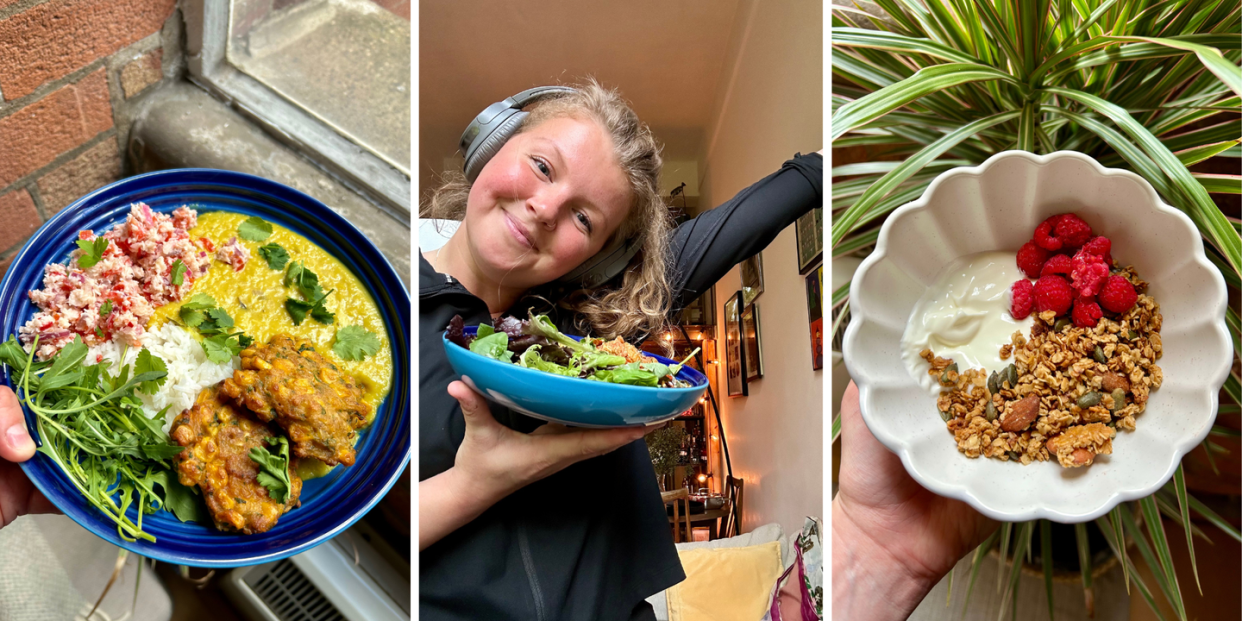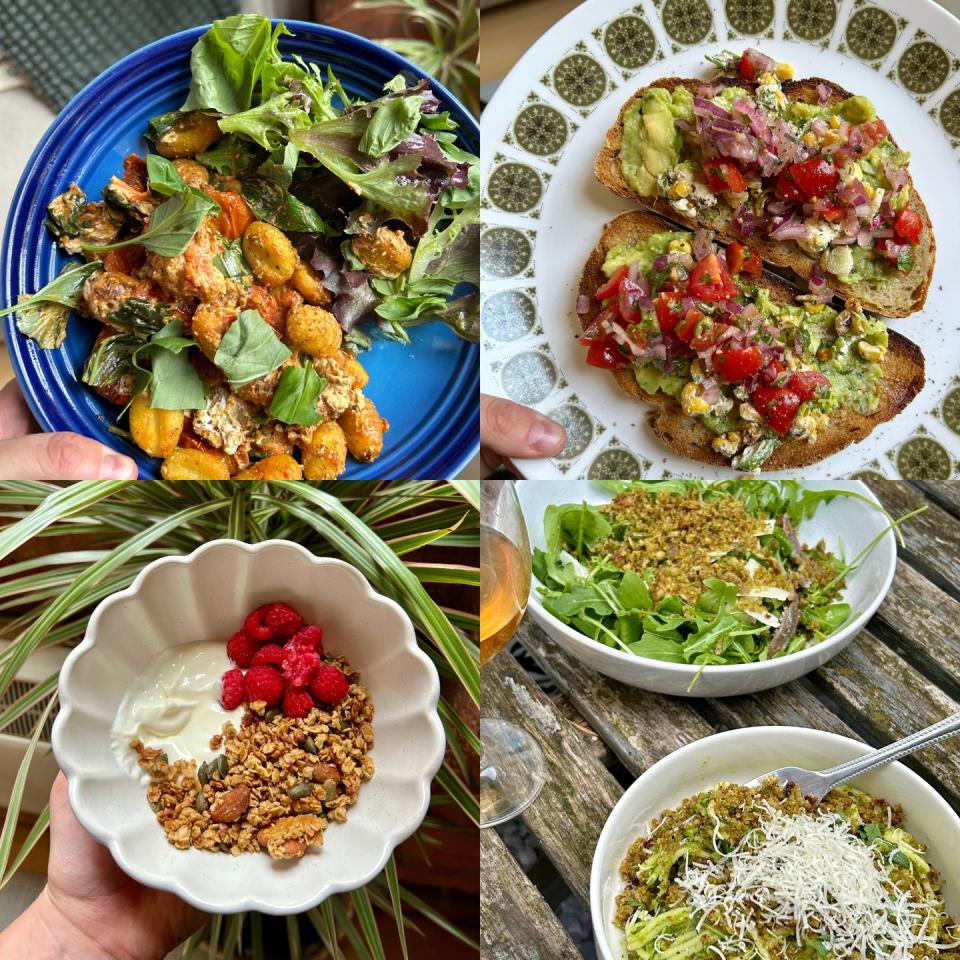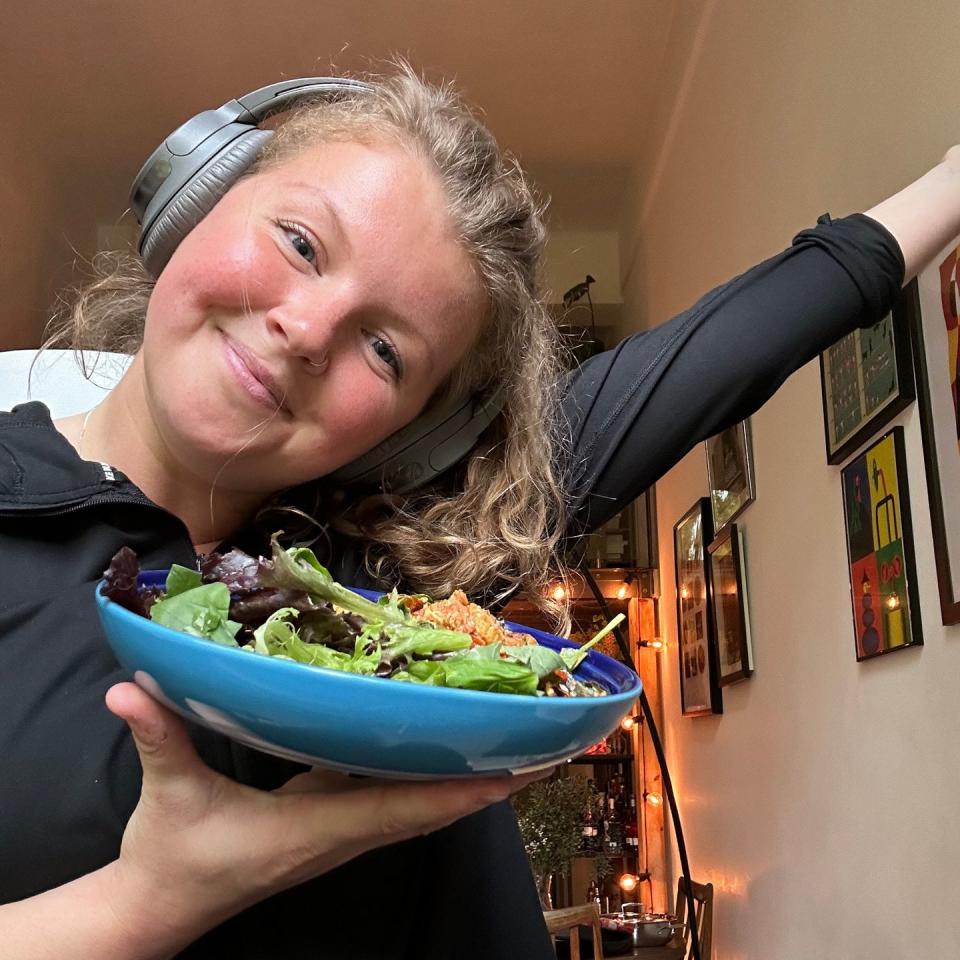'I tried eating 30 plants a week and it's not all it's cracked up to be'

If you’ve been keeping up with the latest lowdown in nutrition, you’ll already know that according to scientists, five a day is out, and 30 a week is in.
In a nutshell, the idea is that instead of eating five portions of fruit and vegetables a day, experts now say that it’s potentially more beneficial to eat 30 different plants over the course of a week.
As registered dietitian, Catherine Rabess writes in her book The 30 Plan – which was published earlier this year – ‘the combination of eating 30 different plants a week and increasing your fibre intake to reach your daily 30g is the golden ticket to revolutionising your gut health.’
While cramming in 30 plants a week might sound like an impossible task, plants aren’t limited to just fruit and veggies. Pulses, whole grains, legumes and even coffee and chocolate are included and count as ‘plant points’, and each new plant you eat over a week also counts.
The idea was developed after a 2018 study called The American Gut Project, which involved 10,000 ‘citizen scientists’ from the US, UK and Australia, found that participants in the study who ate 30 plants a week or more were more likely to have certain kinds of ‘good’ bacteria in their gut.
It’s also worth mentioning that the individuals’ dietary preferences (meat eater, vegetarian, vegan, etc) did not matter, so the goal of 30 plants is therefore accessible to all.
Why should you eat 30 plants a week?
But ‘why is this beneficial?’ you ask. It’s simply about increasing the variety of foods you eat, which in turn increases the number of prebiotics in your gut, which good bacteria feed on.
Some studies support the theory that increased levels of ‘good’ gut bacteria and a diverse microbiome can help you live a longer, healthier life. The reported benefits of keeping your gut microbiome diversity high range from a lower risk of chronic and heart diseases to improved mental health.
Professor Tim Spector of King’s College London, who led the UK arm of The American Gut Project, proposed that instead of eating the same five fruits and veggies a day, it would be even better to eat a wide range of plants to promote good gut bacteria diversity.
Rohini Bajekal, a nutritionist and Board-Certified Lifestyle Medicine Professional at Plant Based Health Professionals says: 'studies have shown that people with the healthiest gut microbiome are eating 30 different types of plants a week (research from the American Gut Project with over 10,000 participants) compared to people who eat less than 10 different types of plant foods per week.'
She says the study showed that diversity of plants was more predictive of microbial diversity than dietary labels including vegan’ or vegetarian. 'A healthy fibre- rich diet is important for gut health along with other healthy lifestyle interventions such as regular physical activity, maintaining a healthy weight, minimising stress, spending time with friends and family, avoiding tobacco, minimising alcohol and spending time in nature,' she says.
There have since been several books published on the subject, including Catherine Rabess’ The 30 Plan and Hugh Fearnley-Whittingstall's How to Eat 30 Plants a Week.
However, there have been valid criticisms of the idea, with some experts saying it may overcomplicate healthy eating. Dr Emily Leeming, microbiome scientist and author of Genius Gut (out 25 July), says ‘diversity is important, but we shouldn’t feel that the 30 plants a week message is the be-all and end-all, it’s based on one guesstimated survey question – not rigorously collected dietary data.’
She says that while attempting to eat 30 plants a week can be a fun way to get more plants into your diet, it shouldn’t totally dictate your eating habits. ‘Yes it’s great to think about diversity, but don’t feel like you can’t eat tomatoes on Wednesday because you ate them on Monday,’ says Dr Leeming.
Even as a 14-year-strong vegetarian who loves vegetables and legumes, I can relate to this. Our lives are busy, we’re already doing our best, and 30 plants is a lot to keep track of over a whole week.
It can also be more expensive and might trigger disordered eating patterns for some. ‘Noting every single different plant down the last smidge of a chia seed doesn’t do anyone any favours, it simply creates food stress,’ says Dr Leeming in her Substack post on the subject. ‘It also can be expensive trying to buy thirty varieties at each shop and creates a lot of food waste when you can’t get through it all,’ she adds.
Bajekal agrees, and also says the method might not be suitable for those living with digestive conditions. 'Fibre should ideally be gradually introduced. A blanket rule to eat 30 or more different plants is not particularly helpful especially for those who might have irritable bowel syndrome and struggle with constipation, diarrhoea, bloating and cramps,' she says.
So, in the name of science, I decided to give the 30 plants-a-week plan a go. Would it be as easy as the fans say, or the bane of my week? Let’s find out...
The challenge
The only objective here is to try and eat 30 different plants a week, including fruit, vegetables, legumes, whole grains, herbs, spices, coffee, popcorn and dark chocolate. I did some research on the ZOE website (founded by 30 plant-a-week expert Prof Tim Spector) to find out exactly what counts as a plant, and then roughly planned my meals Monday to Thursday as per usual. I leave weekends flexible as I'm often out for a last-minute dinner or a coffee. Let’s go.
Spoiler alert – I did manage to squeeze a whopping 32 plants into my week! For full transparency, here’s my plant list:
Oats
Almonds
Pumpkin seeds
Raspberries
Lentils
Red onion
Turmeric
Tomatoes
Basil
Garlic
Oregano
Salad leaves
Sweetcorn
Avocado
Orange
Aubergine
Mint
Cumin
Ground coriander
Chilli powder
Coriander
Rocket
Peas
Parsley
Pine nuts
Spring onions
Paprika
Spinach
Black beans
Chickpeas
Coffee
Dark chocolate
And no, I didn’t cook everything from scratch, I had the same breakfast five times and even enjoyed three meals out. I also drank a coffee or two a day, and I’m currently in love with Montezuma's 70% Cocoa Black Forest Cherry Dark Chocolate, so had some of that as a sweet treat most days too.

How do plant points work?
This is how dietitian Catherine Rabess measures plant points:
Each different variety of plant equals 1 point. So, if you have frozen broccoli florets and a serving of Romanesco broccoli in a week, that would be 2 points. If you have both kidney beans and butter beans in a stew, that would equate to 2 points.
Different colours get you 1 point per colour. A green apple and a red apple is 2 points, a red and yellow pepper is 2 points. A purple carrot is 1, an orange carrot is 1.
Fresh, dried, frozen and tinned fruit and vegetables all count too.
Extra virgin olive oil, dark chocolate (75% cocoa solids and above), tea and good-quality coffee all count as 1⁄4 point, as do individual herbs and spices.
Refined choices such as juices and refined grains don’t count, so stick with whole foods as much as possible – for example, choose brown or wild rice over white basmati rice.
Here are some examples of the meals I ate over the week:
Homemade granola with yoghurt and raspberries: oats, almonds, pumpkin seeds and raspberries (4 plant points)
Feta and tomato gnocchi with green leaves: tomatoes, basil, garlic, oregano and salad leaves (5 plant points)
Black bean and aubergine tacos with guacamole and pico de gallo: avocado, black beans, aubergine and red onions (4 plant points)
A curry night in a restaurant: spinach and chickpeas (2 plant points)
A meal at a friend's house, which was pea pesto pasta with rocket: peas, parsley and rocket (3 plant points)
That’s 18 plants in just five meals, including a meal out. Not bad.
The verdict
Ultimately, it was far easier than I anticipated to fit 30 plants a week into my life. If you’re already eating a flexitarian or fully plant-based diet, then you’ll probably find it easy too.
This was a key factor in the number of plants I managed to pack in, as my usual protein sources are lentils, chickpeas, beans and tofu, all of which count as plants. So, if you’re looking to up your plant intake, switching out meat or fish for one of these options would be a great place to start.
If you’re concerned about missing out on protein, you could consider adding in some of these plants alongside the meat. Plus, you’d be adding even more protein into the mix, as legumes like chickpeas are great sources of the stuff.
Personally, I like a healthy mix of meal prepping and spontaneity in my food life. Most weeks, I’ll have the same breakfast every day before work. Usually, my homemade granola with yoghurt and fruit. I meal-prep three lunches for the office and try to have three or four different dinners across the week, depending on what I fancy and what’s in the fridge (I’ll never be a meal-prep expert, and I’m OK with that). I’ll also eat out once or twice a week, and often I'll have homemade meals at a friend's house. To stay true to my usual way of eating, I did all the same things, but tried to add in a few extras here and there to reach my 30-a-week goal.
This trial week involved my usual breakfast and lunch prepping, which meant it was easier to know which plants I’d be able to fit in. However, as the advice says each plant eaten has to be ‘new’, if you’re eating the same meals throughout the week you’re unlikely to meet the target. Bad news for meal prep enthusiasts!

To some extent, it was fun to think about what I could add to each meal to up the plant points. Crispy pumpkin seeds on my salad? Yes, please. A handful of lentils in my soup? Why not. For me, the key was to see 30 plants as a goal, not a strict regime or diet. You won’t find a tick box chart stuck to my fridge, and nor will you see me forgoing a meal out with friends to ensure I get my plant points in. In fact, the meals I ate at restaurants were surprisingly full of plants without even trying.
My one big takeaway? The key to increasing the diversity of plants in my diet is to let the meal prep go a little and cook a variety of meals at home. Flexibility helps you to add new plants in, too. For example, adding a fresh salad with herbs into a pre-existing pot of leftovers, or adding a tin of chickpeas and some extra spices to a basic soup to create a whole new meal with extra plants included.
Overall, while the goal of eating 30 plants a week is sure to get you thinking about adding more diversity to your diet, it can be confusing to know what exactly is a plant point, and how much of each item counts. So, while I'll definitely be taking the 'more is more' approach when it comes to plants in my meals now, I don't think adding pressure on yourself to reach that magic 30 is practical or beneficial for real, unpredictable, everyday life.
Cut through the noise and get practical, expert advice, home workouts, easy nutrition and more direct to your inbox. Sign up to theWOMEN'S HEALTH NEWSLETTER
More in Nutrition
What is the Mediterranean diet + what are the health benefits?
The best anti-inflammatory foods to eat for gut health, according to dieticians
Em the Nutritionist launches a new gut health supplement – it's called Epetōme, and this is everything you need to know.
Considering going plant-based? Here are 8 things I wish I knew before going vegetarian
You Might Also Like


